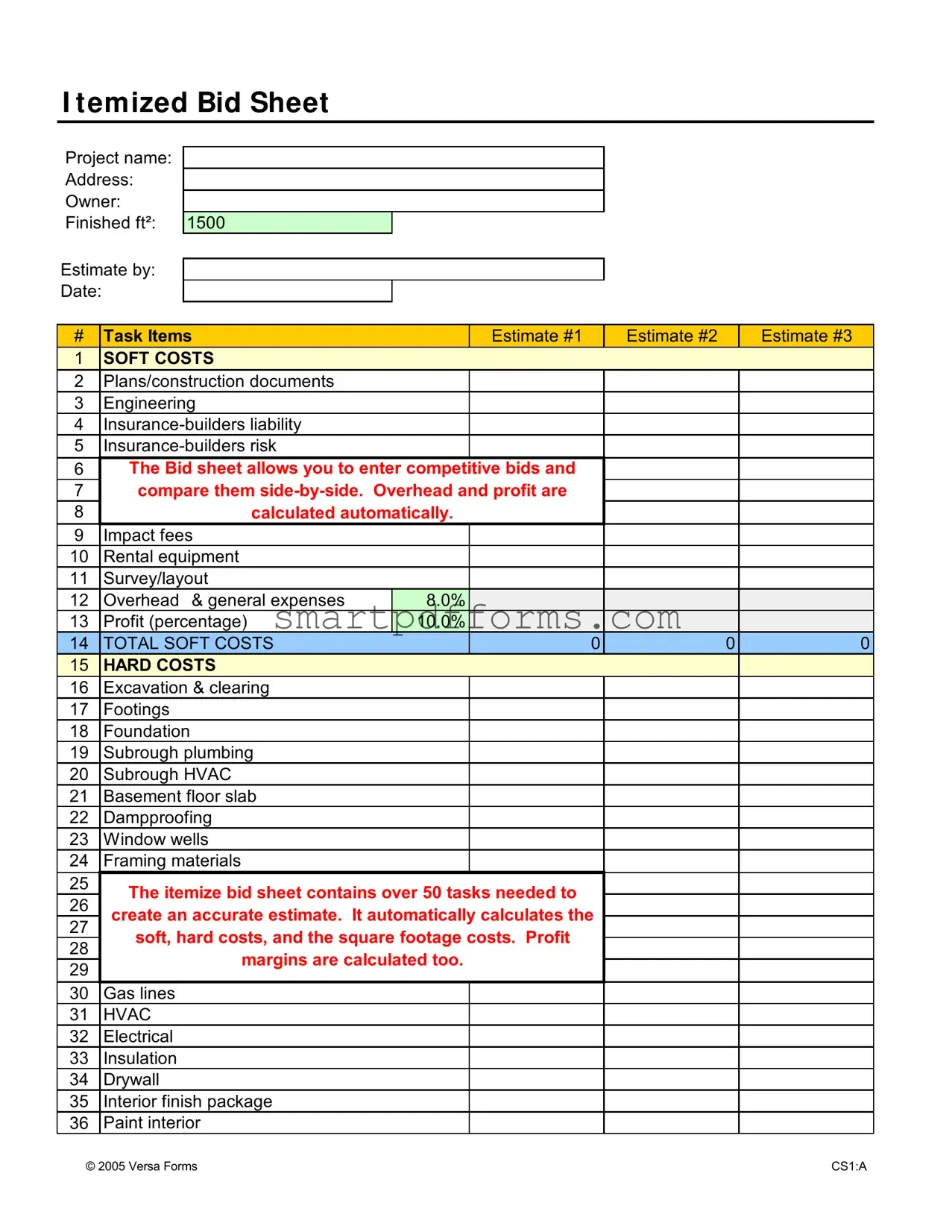Blank Itemized Bid Sheet PDF Template
The Itemized Bid Sheet form is a comprehensive tool designed for accurately capturing and comparing competitive bids across a multitude of tasks necessary for project estimation. This form facilitates the entry of bids for over 50 specific tasks, automatically calculating soft and hard costs, square footage costs, and profit margins. It serves as an invaluable resource in ensuring transparency and precision in project costing, enabling owners and contractors to make informed decisions.
To get started with creating a precise and detailed bid for your project, click the button below to fill out your Itemized Bid Sheet form.
Make This Document Now

